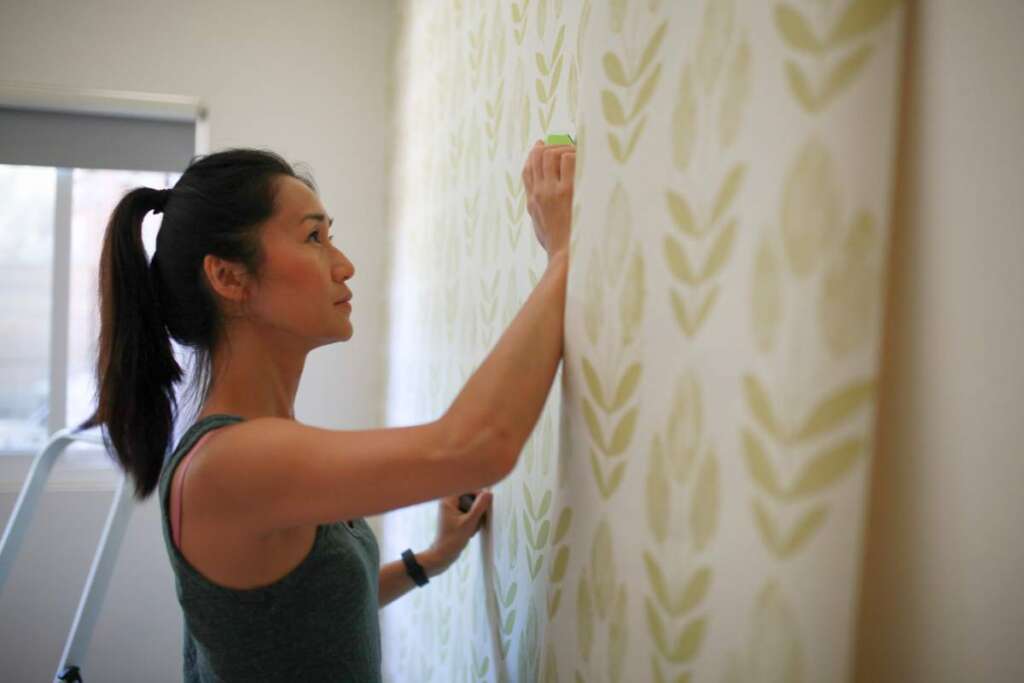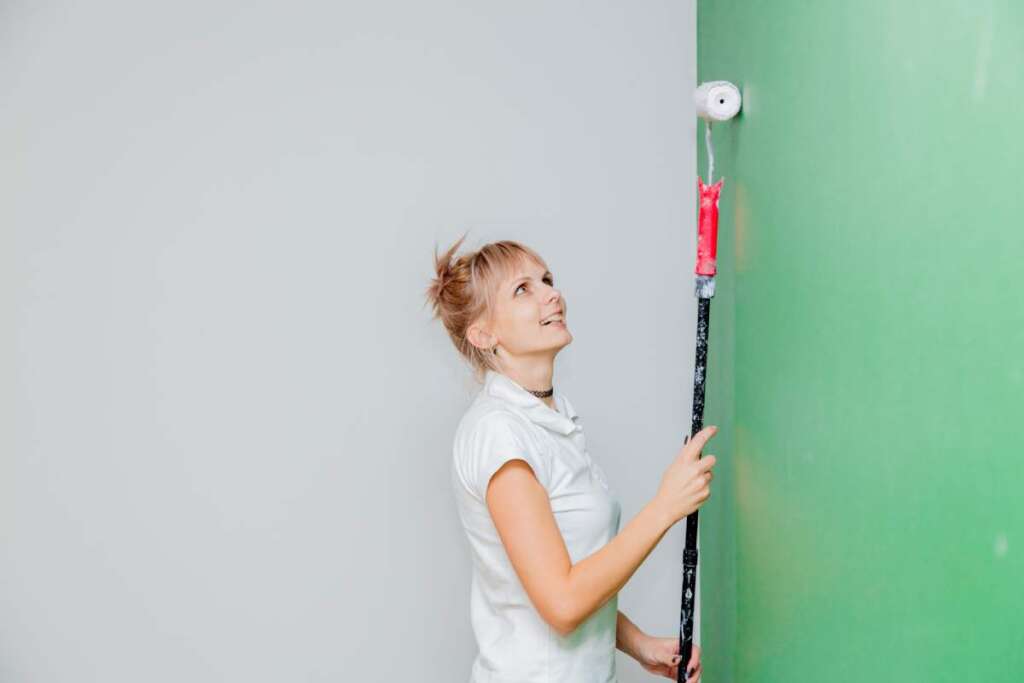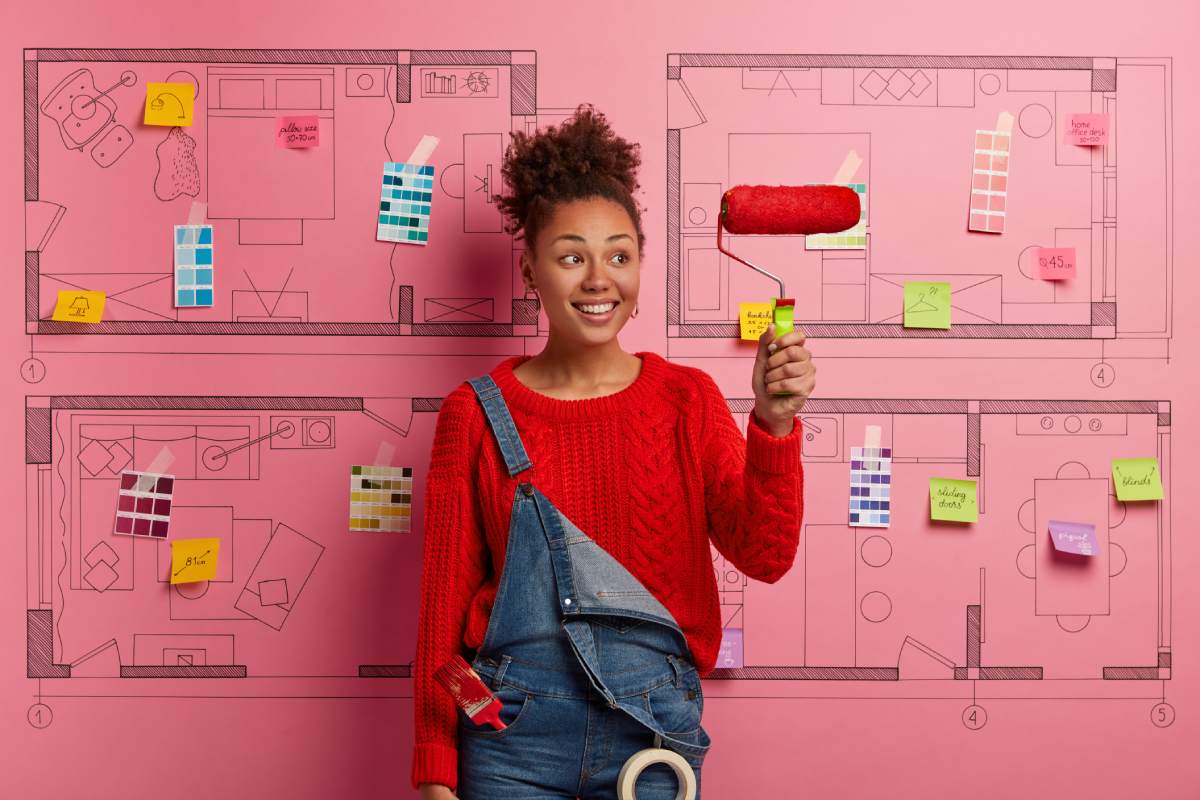When renovating or redecorating, one of the most significant decisions to make is how to finish your walls. Wallpaper and paint are two popular options, each with unique advantages and disadvantages. The choice depends on factors like style, maintenance, cost, and durability.
In this article, we’ll compare wallpaper and paint to help you make the best decision for your home.
Aesthetic Options and Versatility
Wallpaper:
Wallpaper comes in countless patterns, colours, and textures, making it an excellent choice for homeowners looking to add depth and interest to a room. From traditional floral prints to modern geometric designs, wallpaper can instantly transform a space.
You can also find textured wallpapers that mimic materials like stone, wood, or fabric, adding a layer of realism to the design. This versatility makes wallpaper ideal for accent walls or rooms where a strong visual impact is desired, such as dining rooms or entryways.
Paint:
Paint, on the other hand, offers a more straightforward approach to wall finishes. While solid colours dominate, the paint industry has come a long way in providing various finishes like matte, eggshell, satin, and gloss, allowing for some customization.
Paint also offers endless colour options, giving homeowners the flexibility to adjust a room’s mood and style. Speciality paints, such as metallic and textured finishes, can add unique effects, although these may not be as bold as wallpaper patterns.
Verdict: For those looking for bold and intricate designs, wallpaper has the edge. If subtlety and simplicity are your goals, paint offers a more straightforward way to achieve the desired look.
Durability and Maintenance
Wallpaper:
Wallpaper tends to be more durable than paint, especially in high-traffic areas. Many modern wallpapers are designed to resist stains and can withstand more wear and tear. High-quality, washable wallpapers can also be easily cleaned with a damp cloth, making them suitable for homes with children or pets.
However, wallpaper can peel or bubble if not correctly applied or if exposed to humidity, making it less ideal for kitchens and bathrooms unless it’s a specially designed moisture-resistant type.
Paint:
Paint, particularly high-quality and washable varieties, is relatively durable but may require touch-ups over time, especially in areas prone to scuffing. Matte paints, while trendy, can show stains and fingerprints easily, making them harder to maintain.
However, semi-gloss and satin finishes are easy to clean, making them suitable for kitchens, bathrooms, and children’s rooms. Paint can also be reapplied or touched up without needing to remove previous layers, a significant advantage when maintaining wall appearance.
Verdict: For high-durability needs in low-humidity areas, wallpaper is a winner. Paint, however, is generally easier to maintain and touch up in areas exposed to moisture or wear.

Cost Comparison
Wallpaper:
Wallpaper installation tends to be more expensive upfront, considering both materials and labour. High-quality wallpaper, especially custom or designer options, can be significantly more costly. Moreover, wallpaper requires professional installation for best results, adding to the cost.
However, due to its durability, wallpaper might offer value over time, especially in spaces where it’s less likely to need replacement.
Paint:
Painting is generally a more affordable option. While the price of paint can vary based on quality and brand, it’s often less costly than wallpaper. Paint also allows for easier DIY application, which can cut down on labour costs.
However, it may need to be refreshed every few years to maintain a polished look, depending on wear and tear. Speciality paints like textured or metallic finishes can be more expensive but still generally cost less than wallpaper.
Verdict: Paint is generally the more affordable option, especially if you’re on a tight budget or planning a DIY project.
Ease of Application and Time Commitment
Wallpaper:
Installing wallpaper is a precise process requiring expertise. Incorrect installation can lead to visible seams, air bubbles, or peeling, so hiring a professional is typically necessary. Removing wallpaper, especially if it’s been applied with strong adhesive, can be time-consuming and challenging.
It may also damage the walls underneath, requiring additional prep work before repainting or re-wallpapering.
Paint:
Painting is comparatively more straightforward, and many homeowners choose to do it themselves. While some wall preparation is necessary, like filling holes or sanding rough patches, the process of applying paint is generally quicker than wallpapering. Plus, repainting or changing colours over a painted surface is easier than switching out wallpaper.
Verdict: If ease of application and flexibility in future updates are priorities, paint is the better choice.
Environmental Impact
Wallpaper:
Traditional wallpaper is often made from vinyl, which isn’t environmentally friendly due to the chemicals used in production and the difficulty in recycling. However, there are eco-friendly wallpaper options available, such as those made from natural fibres like bamboo or recycled materials. These are usually more expensive but offer a sustainable alternative for eco-conscious homeowners.
Paint:
Paint has improved significantly in terms of environmental impact. Low-VOC (volatile organic compounds) and zero-VOC paints are now widely available, which reduces the release of toxic fumes. Additionally, water-based paints are more eco-friendly compared to oil-based options. If sustainability is important, opting for eco-friendly paint can be both an affordable and greener choice.
Verdict: Eco-conscious homeowners can find environmentally friendly options in both wallpaper and paint, but low-VOC paint tends to be more accessible and affordable.

Longevity and Flexibility of Style
Wallpaper:
Due to its durability, wallpaper often lasts longer than paint and retains its vibrancy and detail over time. However, because of its prominent designs, wallpaper can become outdated as trends change. Removing wallpaper to update the style can be a challenging process, making it less flexible if you frequently like to refresh your decor.
Paint:
Paint allows for more flexibility in updating room aesthetics. If you like to experiment with new colours or finishes, paint can be changed more easily and at a lower cost. This flexibility means that while paint may require more frequent updates, it allows homeowners to keep up with changing styles or adapt as their preferences evolve.
Verdict: Paint is the more flexible choice if you enjoy changing your decor frequently.
Suitability for Different Rooms
Wallpaper:
Wallpaper shines in living rooms, dining rooms, bedrooms, and spaces where humidity isn’t an issue. It’s particularly effective for creating feature walls that add character without overwhelming the room. However, unless it’s a specialized variety, wallpaper may not be suitable for bathrooms or kitchens, where steam and moisture can cause it to peel or deteriorate over time.
Paint:
Paint is ideal for bathrooms, kitchens, and other moisture-prone areas. Washable and moisture-resistant paints are available specifically for these areas, providing a durable and practical solution. Additionally, paint works well in high-traffic spaces like hallways, where it’s easier to touch up scuffs or stains.
Verdict: For moisture-prone or high-traffic areas, paint is the superior choice. For decorative rooms or feature walls, wallpaper provides a unique and striking option.
Conclusion: Choosing Between Wallpaper and Paint
Ultimately, the choice between wallpaper and paint depends on your priorities, budget, and aesthetic preferences. If you value long-term durability and unique patterns, wallpaper could be the best option for you. However, if you seek flexibility, ease of application, and a cost-effective solution, paint is likely the better choice. Some homeowners even opt to use both, using wallpaper for accent walls and paint for the rest of the space, blending the benefits of each.
Whatever you choose, consider factors like room purpose, maintenance, and long-term plans for the space to make the best decision for your home’s style and functionality.

